River Voices Story Three - Landscaping that Heals | |
| Story One | Story Two | Story Three | Story Four | Story Five | |
| Visit the main River Returns web site >> | |
|
|
Narrator: As many as 1000 new residents stream into Florida every day in search of their places in the sun, preferably ones with green lawns. But lawns in Florida consume hundreds of millions of gallons of water from the aquifer each day. And, homeowners dump thousands of tons of polluting fertilizers and pesticides on the lawns. Don Loop of the conservation group Stewards of the St. Johns River says lawns are a major threat to the river. |
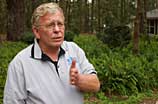 |
Don Loop: The main problem that the St. Johns River has today is you can simply say it is over-fertilized. The river being a huge drainage basin, anytime it rains hard and someone's fertilized, that excess fertilizer runs right into the river. And this is very damaging in that it causes algae blooms, consumes oxygen, kills fish and basically makes for very unhealthy river conditions. |
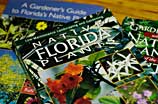 |
Narrator: But there's a growing grassroots effort by individuals and organizations to encourage use of native and "Florida friendly" plants in place of lawns. Jimmy Shine, who lives on the St. Johns River south of Jacksonville, has been leading by example for 50 years. |
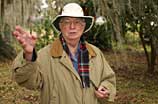 |
Jimmy Shine: My name is Jimmy Shine. We bought the property in '56 and this is on the St. Johns River and we try to keep it as original as we can. I don't like to over-fertilize; I let it be natural and you have less upkeep when you do that. |
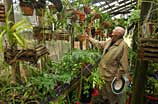 |
Narrator: A master gardener, Shine is troubled by what he sees around him… large tracts of land in the St. Johns watershed being transformed into housing communities and new lawns. |
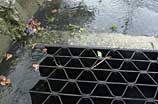 |
Jimmy Shine: Well you're going to have a runoff of fertilizers into the river. We have enough pollutants in there already. Not to add more. Whereas a lot of the homeowners just want to have that dark green grass and away they go. At least that's what we try to do in the master gardener program is to slow down the heavy use of fertilizers. I think a few people are catching on. |
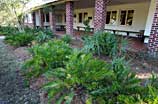 |
Narrator: In Deland, Florida, Stetson University landscape architect David Rigsby, caught on to native landscaping by accident. It happened after a Stetson professor and his students replaced some campus landscaping with native plants. |
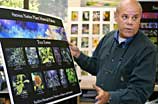 |
David Rigsby: Basically, the long and short of it is that they're having a planting weekend and they were picking up some plants and they were planting natives. The one disconnect on that was, we didn't know that he was going to do this. |
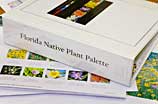 |
Narrator: The impromptu planting session led to a decision by the university to replace … over time … all landscaping with native plants. |
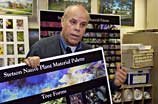 |
David Rigsby: The driving force behind going native was two-fold. One is that to reintroduce some plant diversity and to have something, some plantings that were all native. Number two, as a result, in most cases it would use less in the way of chemicals, less in the way of water. |
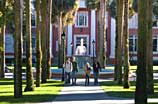 |
Narrator: But on this picture-perfect campus, Rigsby had to convince some that native plants are not only environmentally friendly but also look nice. |
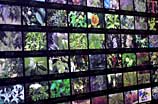 |
David Rigsby: Most people think of native plants from a pure habitat sense. They think of a wooded area that looks overgrown which is really not the case. |
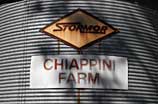 |
Narrator: Stetson's decision to go native doesn't surprise Dave Chiappini owner of Chiappini Farm Native Nurseries in Melrose, Florida. The beauty of native plants is something he's been preaching for 20 years. |
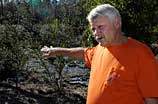 |
David Chiappini: Everything in here is natives. There's no non-natives. You can see how beautiful that is. I mean what's wrong with that. You know you got people who say "Oh, natives look like weeds." Does that look like weeds? No, uh, huh. Beautiful, just beautiful. |
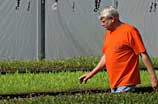 |
Narrator: Chiappini, also the co-president of the Association of Florida Native Nurseries, says that more local governments are requiring native plants in new developments. |
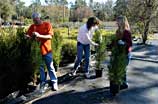 |
David Chiappini: We're seeing a lot more interest from landscapers and developers where they're demanding nothing but native plants in these areas. |
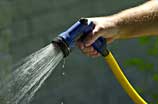 |
David Chiappini: Once they're established, you don't need irrigation. Turn it off. It's on its own. If you mulch it good, you don't have to worry about it. And along with your fertilizer, if you use a slow release fertilizer, you use it at a half rate than what you would normally use -- you have no runoff, you have no nitrogen loss. You have everything the way it is supposed to be. And if you mulch it real good, you don't have to use any fertilizers. And it turns out really good and that's what it's all about. |
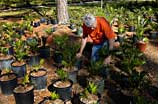 |
Narrator: And by using native plants, Chiappini says homeowners can reduce water and fertilizer use and therefore have less of an impact on the St. Johns River. |
River Voices
The River Returns
Stories of the Great St. Johns
The River Returns web documentary, Copyright © Fusionspark Media, Inc. All Rights Reserved.
All Photos © 2005 Russell Sparkman/Fusionspark Media, Inc., unless otherwise noted.
All Photos © 2005 Russell Sparkman/Fusionspark Media, Inc., unless otherwise noted.
